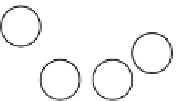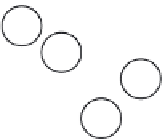Information Technology Reference
In-Depth Information
Trustfulness
.57
External Factors
Internal Factors
.5
.5
.01
.72
.1
Opportunity
.2
Danger
1.0
.4
Ability
.04
.05
.1
.61
.5
.5
.5
Unharmfulness
.5
.5
.5
.5
.0
.0
.5
.5
.05
.3
Availability
.5
.5
.5
.0
DE
DE
.0
DE
.0
.0
.5
C
.7
.0
.0
.5
O/R
.12
.5
.5
O/R
C
.0
.2
R
C
R
O/R
.0
.2
.2
O/R
R
.5
R
.5
DE
.0
.5
C
.5
DE = Direct Experience
C = Categorization
R = Reasoning
O/R = Others/Reputation
.0
.3
.0
DE
O/R
.0
C
R
Positive value
Negative value
Figure 11.5
Routine Visit FCMs for the Doctor. (Reproduced with kind permission of Springer Sci-
ence+Business Media
C
2003)
We have also considered the causal power of each feature. These values are the same both
for the
doctor
and the
machine
. Most values are set to
mildly relevant (
+
0.5)
; the others are:
Ability:
total causation (
+
1);
Accessibility:
only little causation (
+
0.1);
Unharmfulness:
middle negative causation (
−
0.4);
Opportunity:
only little causation (
+
0.1);
Danger:
little negative causation (-0.2)
The results of this FCM are shown in Figure 11.5 and 11.6: trustfulness for the doctor results
good (
0.22)
.
The FCMs are quite stable with respect to minor value changes; setting Machine's 'Acces-
sibility - Direct Experience' to
good (
+
0.57)
while trustfulness for the machine results only
almost good (
+
+
0.6)
, 'Accessibility - Categorization' to
really good
(
+
0.8)
and 'Danger - Categorization' to
little danger (
−
0.5)
results in a non dramatic change
in the final value, that changes from
almost good (
0.47)
but does not
overcome the doctor's 'trustfulness'. This is mainly due to the high causal power of ability
with respect to the other features.
+
0.23)
to
quite good (
+









































































Search WWH ::

Custom Search